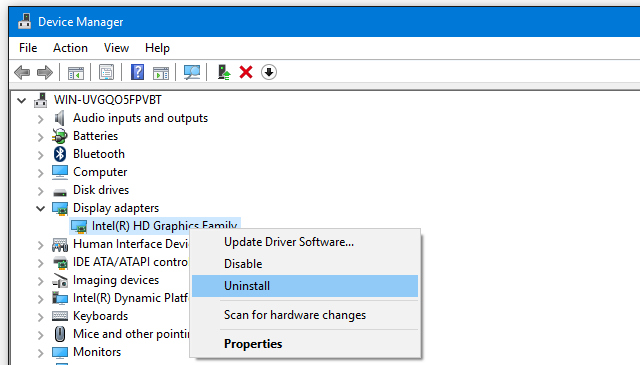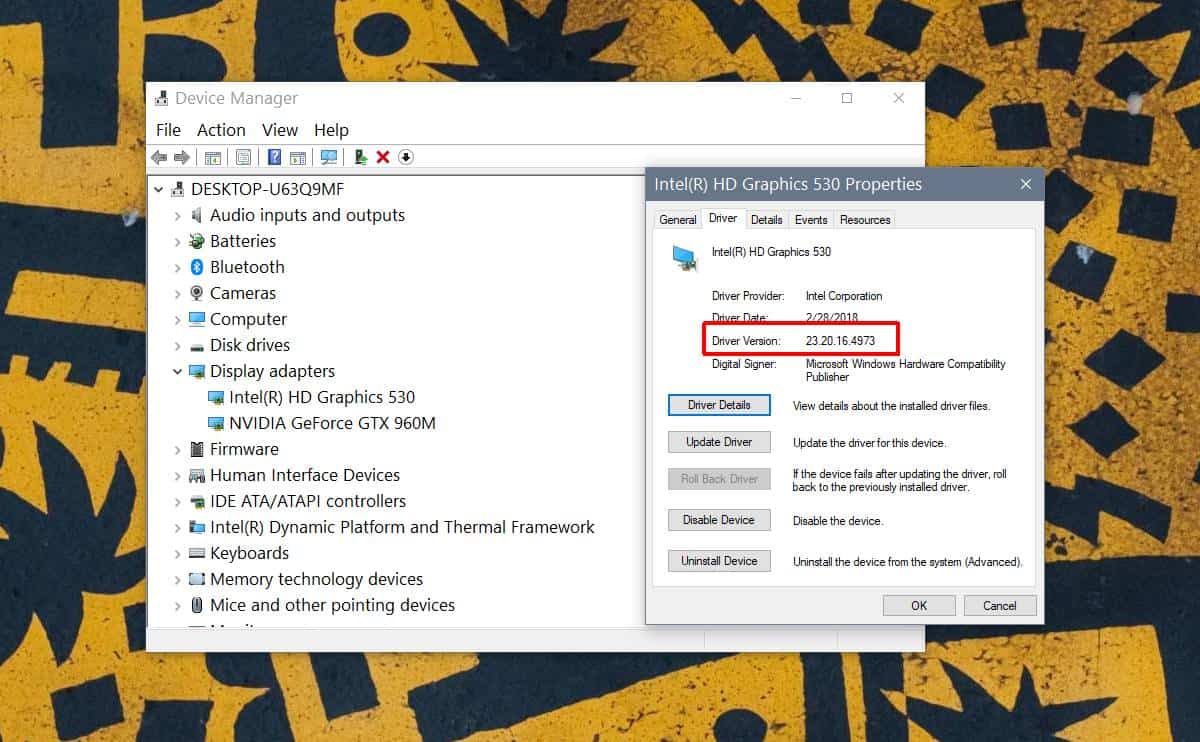
- #Stop automatic display driver update windows 10 how to#
- #Stop automatic display driver update windows 10 install#
- #Stop automatic display driver update windows 10 drivers#
- #Stop automatic display driver update windows 10 update#
- #Stop automatic display driver update windows 10 for windows 10#
#Stop automatic display driver update windows 10 drivers#
Then choose to Search automatically for updated driver software.ĭevice Manager will start searching for the update-to-date NVIDIA drivers for you.
#Stop automatic display driver update windows 10 update#
Expand Display adapters and then right-click the NVIDIA graphic adapter to Update driver.ģ. In the first place, you are able to download or update the NVIDIA drivers within Windows 10, namely, using Device Manager to find and then update the NVIDIA graphics drivers.Ģ. Here in this article, it will chiefly include updating NVIDIA driver manually and automatically for Windows 10, such as NVIDIA GeForce series, NVS series, ION series drivers.ġ: Update NVIDIA Graphics Driver in Device ManagerĢ: Update NVIDIA Drivers for Window 10 AutomaticallyĤ: Update NVIDIA Drivers by GeForce Experience Method 1: Update NVIDIA Graphics Driver in Device Manager Under this circumstance, when it comes to a driver issue, it is to say that it is the time for you to update your NVIDIA graphics card driver for Windows 10. Without the compatible NVIDIA driver, your computer may freeze in blue screen, which brings great inconvenience for your life. I’ll get back to you ASAP.People are upset about the problems with NVIDIA, for example, the NVIDIA driver crashing or not installed normally. If you have any questions, feel free to drop a comment below. But you need to keep the Enabled option (mentioned in Step 5) selected. If you want to prevent driver updates for other specific devices in the future, you can keep adding the hardware IDs of those devices to the Value section mentioned in Step 6. Back on the policy page, click OK to save the changes. In the Show Contents window, copy and paste all hardware IDs you’ve saved earlier to the Value section. Select Enabled and click the Show button to open the Show Contents window.Ħ. On the right panel, double-click on Prevent installation of devices that match any of these devices IDs.ĥ. Expand Computer Configuration > Administrative Templates > System > Device Installation, and click Device Installation Restrictions. Step 2: Prevent installation of devices that match any of these device IDsĪfter you find the hardware IDs for the devices, open the Group Policy editor and configure the related settings to prevent installation of the device drivers. Then copy and paste the hardware IDs of the devices to the text file.ĩ. If you need to block driver updates for multiple devices, repeat the above steps for each device. Create a text file and paste the hardware IDs to the text file. Copy all hardware IDs from the Value section.Ĩ. Select Hardware Ids from the drop-down menu of Property.ħ. Double-click on the device to open the device Properties.Ħ. In Device Manager, find the device that you want to block the driver updates for.Ĥ. Type devmgmt.msc in the Run box and click OK to open Device Manager.ģ.
#Stop automatic display driver update windows 10 how to#
Here’s how to find the hardware IDs for a device:Ģ. To block driver updates for a specific device, you need to find the hardware IDs for the device. Almost all devices have a list of hardware IDs. To block driver updates for specific devices, only two steps are needed: Step 1: Find the hardware IDs for the deviceĪ hardware ID is a vendor-defined identification string that Windows uses to match a device. If you just want Windows 10 not to update drivers for some specific devices, you can use this method, which allows you to block driver updates for specific devices.

Method 3: Block driver updates for specific devices
#Stop automatic display driver update windows 10 for windows 10#
For Windows 10 home users, Method 1 should work for you. But this method only applies to Windows 10 Professional, Windows 10 Ultimate, and Windows 10 Enterprise, as Group Policy isn’t available in Windows 10 home. Select Enabled and click OK to save the changes.Īfter you configure the settings following the steps above, you won’t get driver updates via Windows Update.

On the right panel, double-click Do not include drivers with Windows Updates.ĥ. Expand Computer Configuration > Administrative Templates > Windows Components, then click Windows Update.Ĥ. Type gpedit.msc in the Run box and click OK to open the Local Group Policy Editor.ģ. On your keyboard, press Win+R (the Windows logo key and the R key) at the same time to invoke the Run box.Ģ. Just enable ‘Do Not Include Drivers with Windows Updates’ in Group Policy.įollow these steps to disable automatic driver updates via Group Policy:ġ. You can stop Windows 10 automatically installing drivers using Group Policy.

Method 2: Disable automatic driver updates via Group Policy Select the Hardware tab and click Device Installation Settings.ĥ. You can configure Device Installation Settings to allow or prevent automatic driver updates. Method 1: Configure Device Installation settings
#Stop automatic display driver update windows 10 install#
If you don’t want Windows 10 to install drivers automatically, you can use one of the three methods to disable automatic driver updates. It’s good that Windows helps you update drivers automatically. Windows 10 can automatically download and install drivers for some devices via Windows Update, say graphics cards.


 0 kommentar(er)
0 kommentar(er)
